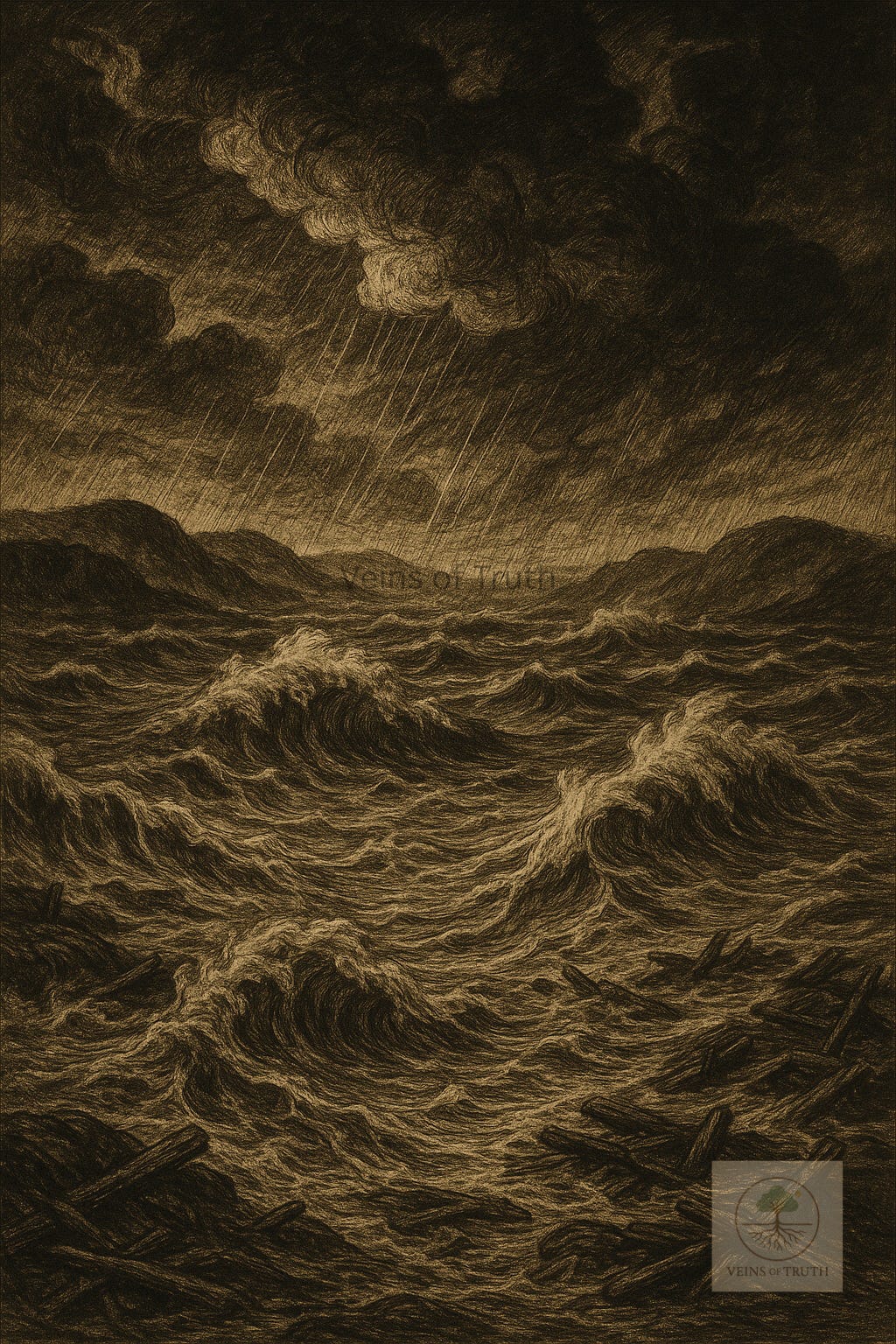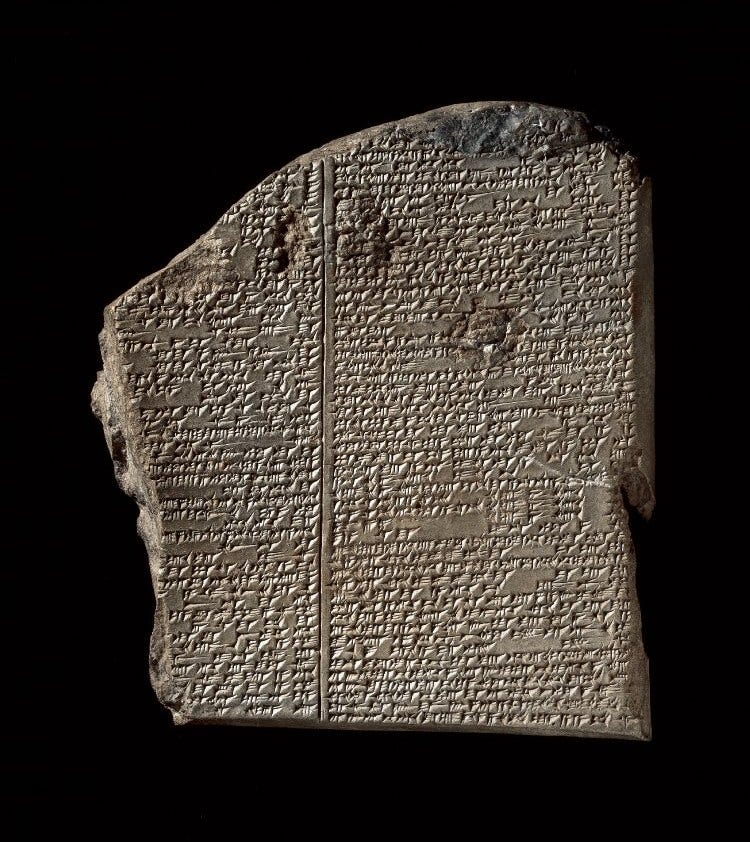Noah and the Great Flood: What the Evidence Really Says
Connecting the Dots Article 1
This article traces the story of the Great Flood through multiple lenses combining archaeological discoveries, geological records, ancient Mesopotamian texts, and the accounts found in both the Bible and the Qur’an. It’s not just scripture, it’s a layered investigation into one of humanity’s most enduring memories.
Long before the rise of empires and kings, before Sumer or Egypt built their first monuments, there lived a man named Nuh (Noah). Sent as a warner to his people, Nuh preached the oneness of God and warned of an overwhelming flood if they did not abandon their idolatry and immorality.
He preached for 950 years (Qur’an 29:14), yet only a handful followed him. The majority mocked him, ridiculed his message, and clung to the worship of false gods. Eventually, the command came from God: build an Ark. The storm would come.
Qur’an (11:36-37): "And it was revealed to Noah that, 'None of your people will believe except those who have already believed, so do not be distressed by what they have been doing. And construct the Ark under Our observation and Our inspiration...'"
Genesis 6:13-14 (Bible): "So God said to Noah, 'I am going to put an end to all people, for the earth is filled with violence because of them... So make yourself an ark of cypress wood..."
And so, a flood was sent not just as a punishment, but as a cleansing of the Earth.
Historical and Archaeological Traces
Key Evidence and Theories:
Mesopotamian Flood Layers: Excavations at sites like Ur (in modern-day Iraq) revealed thick layers of flood silt that separate early civilizations, suggesting a massive local flood.[1] This discovery was made by Leonard Woolley, who found a clean, artifact-free layer of silt up to 11 feet deep, signaling a sudden break in human occupation. While some initially believed this could be the flood of Nuh (Noah), others questioned: Was this the same event or just a local disaster?
Woolley dated this flood layer to around 3500 BCE, and similar flood deposits were later found at Shuruppak and Kish, both of which are linked to ancient Mesopotamian flood legends. Islamic tradition holds that Nūḥ lived long before Ibrahim (Abraham), who is generally placed around 2000 BCE and that he preached to his people for 950 years, as the Qur’an states (Qur’an 29:14). While the Qur’an gives no specific date, classical Muslim scholars such as Ibn Kathir (Al-Bidayah wa’l-Nihayah), Al-Tabari (Tarikh al-Rusul wa-l-Muluk), and Al-Masʿudi (Murūj al-Dhahab) used genealogical traditions, narrations, and ancient Israeliyyat sources to estimate that Nūḥ may have lived sometime between 4000 and 3000 BCE. These approximations, based on 10 generations after Adam and the long lifespans of early people, loosely align with the timing of these ancient flood events in Mesopotamia.
Though this does not prove that Woolley’s discovery is the flood of Nūḥ, it strongly suggests that a real catastrophe occurred in the same region and era—possibly forming the basis of what was later preserved in both scripture and legend. As the Qur’an reminds us, every nation is sent a warner, and when the truth is rejected, consequences follow sometimes so great that the earth itself becomes a witness to what took place (Qur’an 99:4–5).
The Epic of Gilgamesh: A Sumerian story with an eerily similar flood narrative predating the Bible by centuries. Scholars believe it may be a cultural echo of the same historical event.[2]
Image: Clay tablet with the flood story from the Epic of Gilgamesh Tablet XI.
Source: Wikimedia Commons (Public Domain)
A Flood Preserved on Ancient Tablets
The most compelling non-religious confirmation of a flood tradition comes from ancient Sumerian clay tablets, discovered in Nineveh and other Mesopotamian sites. These tablets, written in Akkadian cuneiform, preserve the famous story of Utnapishtim, a man warned by the gods about a divine flood.
This account is found in Tablet XI of the Epic of Gilgamesh, dated to around 2100–1800 BCE older than the Hebrew Bible. In the story, the gods instruct Utnapishtim to build a massive boat, bring animals aboard, survive a worldwide flood, and release birds to find land.
Epic of Gilgamesh, Tablet XI (lines 24–28):
“Tear down your house and build a boat! Abandon wealth and seek survival! Despise possessions and save life! Take all kinds of living things aboard the boat.”[8]
After the flood subsides, the boat rests on a mountain, and birds (a raven and dove) are sent out to find land — just like in the Biblical version.
Keep reading with a 7-day free trial
Subscribe to VEINS OF TRUTH to keep reading this post and get 7 days of free access to the full post archives.



